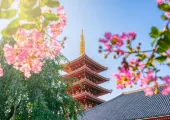Best Places to see Cherry Blossoms in Japan
Catalogue
- Japan Travel Restrictions
- Japanese Cherry Blossoms
- When to See Cherry Blossoms in Japan
- Tokyo
- Sapporo
- Sendai
- Kanazawa
- Nagoya
- Kyoto
- Osaka
- Hiroshima
- Fukuoka
- Where to See Cherry Blossoms in Japan
- Tokyo
- Kyoto
- Yoshinoyama (Mount Yoshino)
- Fuji Five Lakes
- Aomori
- Sapporo
- Hakodate
- Kumamoto
Show More
Spring is a time of rebirth, a time when people eagerly await the chance to cast off winter's dull embrace. In Japan, spring heralds the coming of cherry blossoms. For what seems like a fleeting instance, sakura (as they're known in Japan) emerge in exquisitely delicate shades of white and pink. The soft colors signal promising times ahead, something we can all hope for more than two years into the global pandemic. Regretably, the Japanese government responded to COVID-19 by essentially closing the country off entirely to travelers. This year, however, there is reason to believe the hardline stance may be softening. We'll let you know about the current state of Japan’s travel restrictions and profile some amazing places to see the sakura. Here is our guide to some of the best places in Japan to see sakura.


Japan's COVID-19 travel restrictions remain among the world's strictest. For much of the pandemic, Japan has remained closed to essentially all foreigners. Recent moves by the government in Tokyo indicate a willingness to reevaluate these tough measures. At the time of writing, Japan has announced plans to increase the number of foreign visitors permitted to enter the country. This will begin with business travelers and students and, it is hoped, gradually progress towards allowing tourists and other leisure travelers. With cherry blossom season extending into late April in parts of Northern Japan, including Northern Honshu and Hokkaido, it is not inconceivable to think foreign visitors may be allowed in time to see this annual spender for themselves once again.

Find the latest travel policy information on Trip.com.

Japanese Cherry Blossoms have long captured the imagination. With well over one hundred varieties, the cherry tree is a prominent element in Japanese gardens. Paying attention to several distinguishing characteristics will help you to differentiate tree species and appreciate their variety. First, look at the number of petals. These range anywhere from five to over a hundred in some varieties. Trees whose blossoms contain more than five petals are known as yaezakura. A second characteristic is the blossom color. By far light pink and white petals are most common; however, there are some with dark pink, yellow, or even green blossoms. A final distinguishing feature is a tree's general form. Here one finds anything from triangular, flat-topped, V-shaped, or even weeping. Recognizing the variety among sakura adds to the enjoyment and helps provide for a more immersive and wholesome experience.
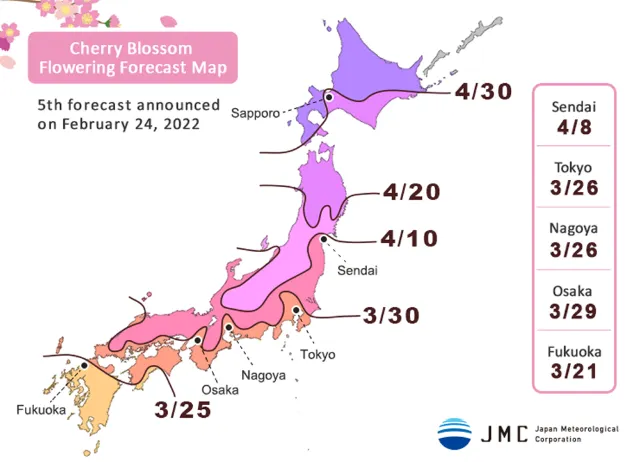
Cherry blossom season extends from late March to mid-April, or even early May in some places. Observing the annual cherry blossom is all about timing. Weather conditions heavily influence when blooms occur as cold and harsh winters can delay the flowering. There is also geographic variation. On Okinawa, with its subtropical climate, blooms can occur as early as January. In contrast, northern partsof Hokkaido can see blooms at late as the first week in May. In Tokyo and the neighboring prefectures, the cherry blossoms commonly peak around the first week in April. Japanese national weather services track the bloom and each year provide detailed forecast models. Travelers should check these when booking travel dates. In considering where to go, it is useful to consider what you hope to see. Japan Meteorological Corporation's official cherry blossom forecast as of February 24, 2022, predicts the following:
The following are several areas around Japan with highly-regarded cherry blossom viewing opportunities.
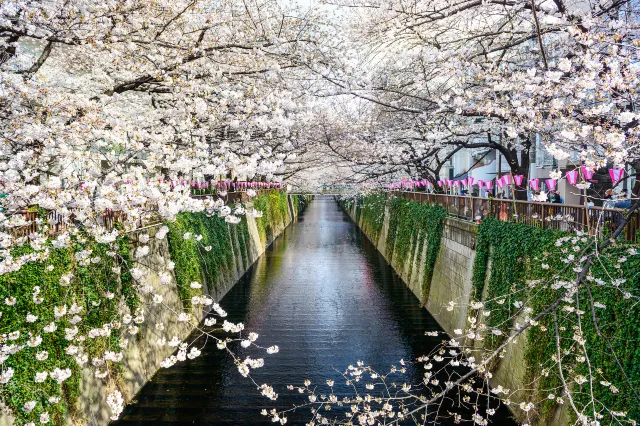
It’s no surprise Japan’s capital would feature excellent cherry blossoms. The city’s many parks and curated gardens have honed their cultivation skills for centuries. Shinjuku Garden is one of the city’s top viewing spots. The park contains over 1,500 cherry trees, which during peak bloom create a magnificent undulating ocean of pink and white flowers. It’s enough to bring a tear to your eye.
Similarly, Ueno Park has an impressive cherry tree assortment. As an added bonus, many great cultural institutions are located there, making it easy to visit a museum or two in between cherry blossom viewing. Finally, the Meguro River is a stunning visual feast. The banks are lined with cherry trees that create a flowing carpet of flowers as the soft petals fall to the river below. Lit paths make this an especially good place to come after dark. It’s hard to imagine a more romantic moment than a walk among the cherry blossom on a warm spring evening.
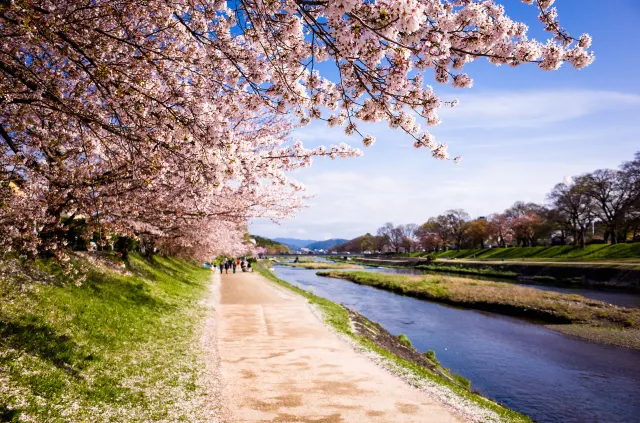
Japan's cultural capital is likewise replete with splendid cherry blossoms. In particular, the paths around Arashiyama appear conjured from a graphic novel. The bamboo forest interspersed with cherry trees is magical at any time of year. During peak bloom it is positively other-worldly. Kyoto's slower pace and more relaxed atmosphere add to the experience.
The aptly named Philosopher's Walk is one of the Kyoto's other springtime treasures. Set astride a canal beginning near Ginkakuji Temple and running approximately two kilometers, the Philosopher's Walk literally explodes with color. It is arguably Kyoto's most popular spot for hanami, or the Japanese tradition of cherry blossom viewing.
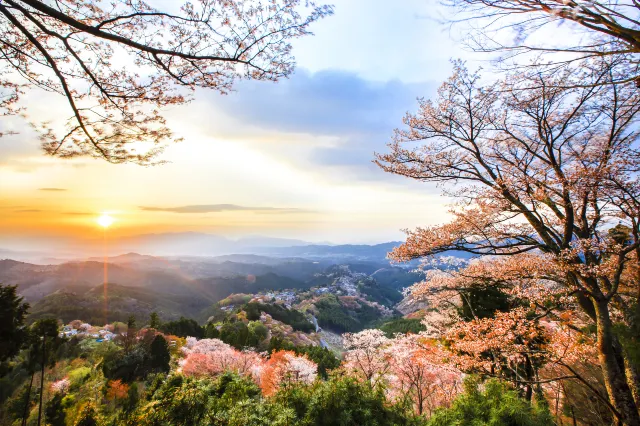
Mount Yoshino is famous throughout Japan for its concentration of cherry blossoms. Upwards of 30,000 sakura are clustered on its slopes. During peak flowering, the entire area becomes a magical wonderland, bathed in cherry blossom pastel colors. Mount Yoshino is an excellent location to visit for people who favor a more rural destination. Located in Nara Prefecture, Mount Yoshino is a great addition to your itinerary if you’re already planning on visit Nara for the city’s famous deer park, Great Buddha statue, or Kasuga Shrine. Standing only 1,150 ft (350 m) in elevation, Mount Yoshino is readily accessible to just about any traveler and doesn’t require an arduous hike.
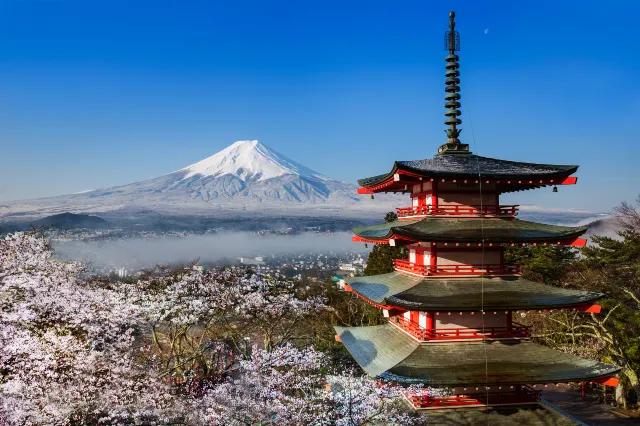
If cherry blossoms are a symbol of Japan, so too is Mount Fuji and combining the two makes for an unforgettable portrait. In the Lake Kawaguchi area, the blossom occurs within sight of the famous mountain. With its snowcapped volcanic cone in the background, you will have some fantastic pictures to send home. The Fuji Five Lakes area is easily accessible from Tokyo, making it possible to day trip from the Japanese capital. However, once you get to the area, there's a high likelihood you won't want to leave right away. We recommend booking at least a night's stay so you can enjoy the blossoms during the magic hours and dawn and dusk.

Aomori, famous for its eponymous apple variety, is more often regarded as an autumn travel destination. While it certainly is that, Aomori may be just the place for your cherry blossom adventure. The area around Hirosaki Park is lauded as one of the largest cherry blossom collections in all Japan. Plantings first began in 1715 and the number of cherry trees has steadily expanded since. With Hirosaki Castle as a backdrop, it’s nothing less than an awe-inspiring site to walk there among the spring blossom.
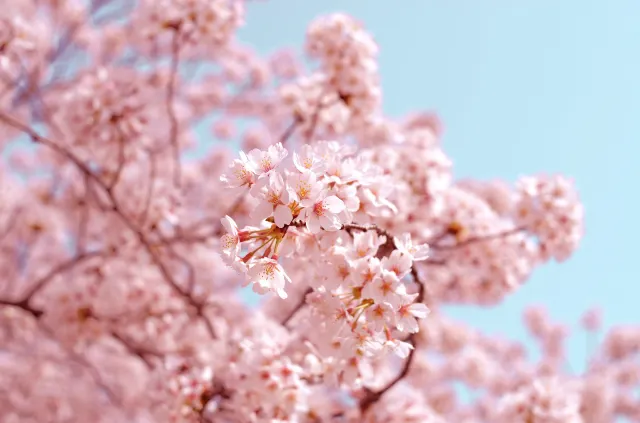
If your schedule or Japan's travel restrictions don’t permit you to visit before the end of April, consider visiting Sapporo. The capital of Hokkaido often saves its bloom for early May. Pay a visit to Hokkaido Shrine where you can see the region come alive as spring finally reaches Japan's northern prefectures.
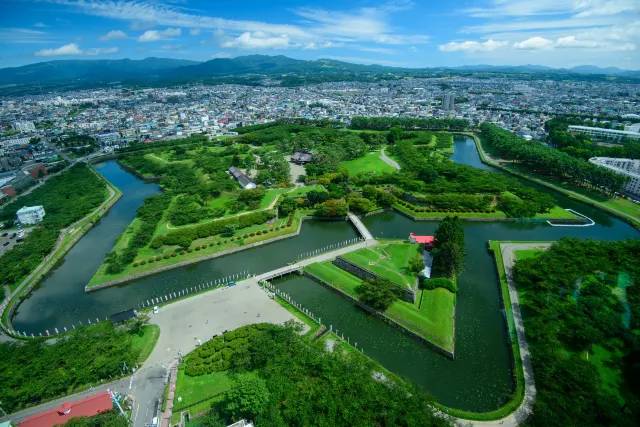
Another great destination on Japan's northern Hokkaido Island is Hakodate. Hakodate is home to the lovely Goryokaku Park, an old defensive fort built in a 5-pointed star pattern. Wandering the many paths around this star park will leave with a twinkle in your eye. Each corner comes to life with blossoms. Meandering along the fort’s old stone walls, you might well imagine yourself transported to some far distant past and away from the worries of modern life.

Finally, for those in a hurry, there is the southern city of Kumamoto. Here the sakura blooms happen around the end of March. If you're eager to see the feast of color and life, this is a great place a visit. Maybe you want to adopt a nomadic lifestyle and follow the bloom north. Either way, Kumamoto provides one of the earlier chances on Japan’s main islands. Visit Kumamoto Castle, regarded as one of the Japan’s three major castles. Here the bloom set in front of the towers gives you a sense of traveling back to a classical Japan.
No matter where you choose to go, be sure to observe the blossom forecast. This will help ensure you can find the optimal time to see the magnificent bloom is all its glory. Enjoy too the sights and the many people milling about, admiring the bloom, relaxing under the trees, and imbibing the spirit of hanami. This thoroughly Japanese practice relaxes and body and comforts the soul. It is truly a marvelous time.
Trending Travelogues
Popular Trip Moments
Popular Travel Types
Popular Attractions
Popular Destinations
Recommended Attractions at Popular Destinations







Site Operator: Trip.com Travel Singapore Pte. Ltd.

